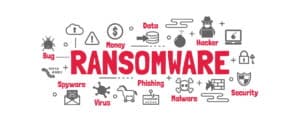Today, businesses face a different kind of workplace. Teams are remote. Devices are scattered. Cyber threats are more frequent. And customers expect data to be handled safely. Secure workspace solutions in this scenario have gone from a tech alternative to a business must-have.
When well-implemented, these solutions protect sensitive information, help meet strict regulatory standards, and let people work smoothly from anywhere. In this blog, we’ll break down the three most important benefits: security, compliance, and productivity
We’ll also illustrate how these solutions tackle common pain points that lead to security breaches and workflow interruptions, mostly for remote and hybrid work environments.
Stronger Security Where It Matters Most
Secure workspace platforms are designed to reduce risks from the start. They use a zero-trust model, which means no one gets access unless verified—not even internal users. Every login, every file transfer, and every session is checked and logged.
This model is supported by features like:
- Endpoint isolation – Keeps each user’s session separated from others to avoid spread of threats.
- Real-time monitoring – Detects unusual activity and flags risks instantly.
- Encryption at rest and in transit – Protects data while it’s stored and while it’s moving.
- Application control – Prevents unauthorized software from running in the workspace.
These layers of protection are especially useful for businesses that allow third-party access or operate across multiple locations. Instead of managing a patchwork of tools, teams get one system with all the controls in place.
The same security backbone powers technologies like virtual desktop infrastructure (VDI) and zero-trust network access (ZTNA), which are the foundation of most modern secure workspace setups. These tools help limit exposure to threats while keeping users connected wherever they work.
Easier, Built-In Compliance for Regulated Industries
Staying compliant with industry regulations can feel like a full-time job. But secure workspace platforms take much of that pressure off. Many come preloaded with controls that align with standards like:
- ISO 27001
- SOC-2 Type II
- HIPAA
- GDPR
- PCI-DSS
Instead of building security policies from scratch, businesses can rely on frameworks already mapped to regulatory needs. This makes it easier to meet requirements, pass audits, and reduce the risk of penalties.
Built-in compliance tools often include:
- Session recording
- Audit logs and reports
- Role-based access controls
- Automated policy enforcement
These features help regulated companies, such as those in finance or healthcare, maintain proper oversight without slowing down operations. Governance controls are especially valuable when paired with access for contractors or remote teams, where visibility is usually harder to maintain.
Providers like Mindcore include compliance support as part of the core offering, not just an add-on. That approach makes it easier for teams to stay ahead of audits and shifting data protection laws.
More Productivity Without Losing Control
Security and compliance matter, but so does getting work done. A good secure workspace setup strikes the balance between protection and performance.
Users can log in from any device and immediately access a full virtual desktop—with the apps, files, and tools they need, all in one place. This setup removes common blockers like slow VPNs, disconnected tools, and constant access requests.
Here’s how productivity gets a boost:
- Centralized access – No more jumping between tools or waiting for manual approvals.
- Cloud-based desktops – Smooth performance across devices, even on lower-end hardware.
- Unified platform – IT teams manage updates, security, and user permissions in one dashboard.
- Faster onboarding – New hires and contractors can be set up quickly with the right access levels.
Instead of teams working around tech, the workspace becomes an enabler. Everyone, from full-time employees to third-party partners, stays on the same secure system without compromising control.
Many small and mid-sized businesses find this especially helpful, as they don’t have big IT departments. A secure workspace solution gives them access to enterprise-level tools, minus the complexity.
Real Results for IT Teams and Budgets
Secure workspace solutions don’t just help end users. They also make life easier for IT teams. Instead of managing multiple disconnected systems, they can monitor, patch, and support everything from one place.
That kind of visibility reduces time spent on troubleshooting and improves response times. It also leads to better budgeting. By consolidating security and access into one platform, businesses reduce the need for extra tools and licenses.
Benefits for IT and finance teams include:
- Lower support tickets
- Predictable monthly costs
- Less time managing individual devices
- Reduced risk of unplanned downtime or breaches
These efficiencies become even more noticeable when the solution supports automation, such as activity alerts and policy enforcement. For companies evaluating ROI, this side of the equation is just as important as user experience.
Continuity and Resilience for the Long-Term
Disruptions happen. Whether it’s a power outage, a network attack, or an unexpected change in where teams work, secure workspaces help businesses adapt fast.
Because everything is hosted in the cloud and separated by user session, teams can quickly resume work even during a crisis. There’s no need to wait for physical offices to reopen or for local machines to be fixed.
Key benefits for resilience:
- Disaster recovery ready
- Always-on remote access
- Flexible hybrid infrastructure
This flexibility has made secure workspace platforms a go-to choice for companies focused on business continuity planning. Instead of reacting to downtime, they’re prepared to keep moving.
Final Thoughts
Secure workspace solutions constitute much more than a means of enabling remote file access. They are genuinely business-value-generating tools. Indeed, the platforms ensure that companies of all sizes stay secure, work smoothly, and confidently support remote teams by focusing on security, compliance, and productivity.
Whether you’re facing strict regulations, growing a hybrid team, or just want to simplify IT, these solutions offer a future-ready foundation. Mindcore’s approach, which harnesses the power of Tehama technology, shows the advantage of a unified platform that provides solutions across the full spectrum without unnecessary overhead.
For businesses still exploring how secure workspaces work, it’s worth understanding the key features behind the platform and the implementation process that makes rollout smooth. The results speak for themselves—stronger systems, smarter workflows, and teams that can do more without taking on more risk.



